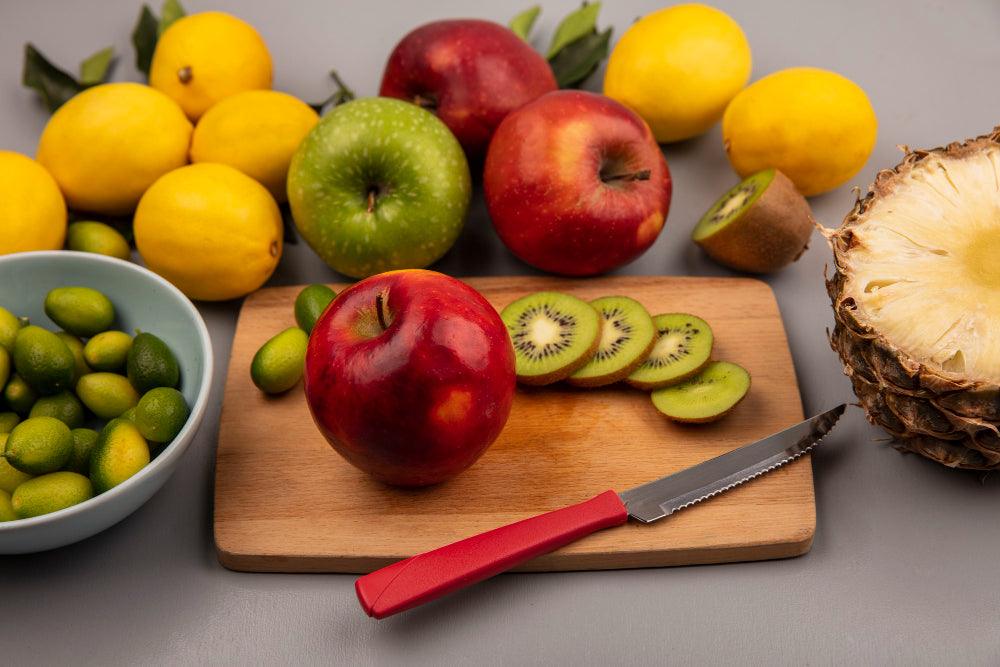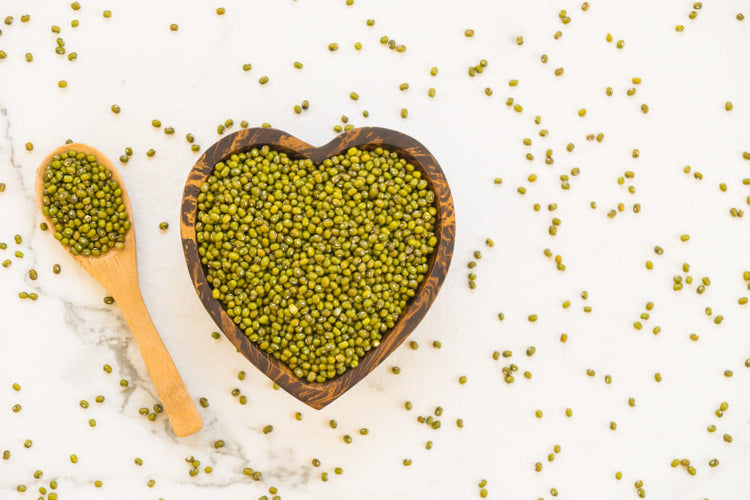Benefits of Low Glycemic Fruits in Your Daily Diet


Related products

What is Glycemic Index?
The glycemic index (GI) is a ranking system for carbohydrates based on their immediate effect on blood glucose levels. Carbohydrates that break down quickly during digestion release glucose rapidly into the bloodstream, thus having a high GI. Conversely, carbohydrates that break down slowly, releasing glucose gradually into the bloodstream, have a low GI. Understanding the GI is crucial as it helps individuals manage blood sugar levels, which is particularly important for those with diabetes or prediabetes.
Low Glycemic Fruits and Their Health Benefits
Low glycemic fruits, such as berries, cherries, apples, and pears, have a GI score of 55 or less. They are not only rich in essential vitamins, minerals, and fibre but also have a lesser impact on blood sugar levels. Integrating these fruits into one's diet can contribute to various health benefits, including improved blood sugar control, weight management, and reduced risk of chronic disease.
Incorporating Low Glycemic Fruits for Overall Health Improvement
Incorporating low glycemic fruits into the diet can aid in maintaining stable blood sugar levels, which is vital for overall health. A diet rich in low glycemic fruits can help in preventing the spikes and crashes in blood sugar that can lead to increased hunger, fatigue, and risk of diabetes.
Understanding the Glycemic Index
The glycemic index measures the impact of carbohydrate-containing foods on blood sugar levels. Glycemic load, on the other hand, considers both the GI and the amount of carbohydrate in a serving of the food. Both GI and GL are tools used to guide food choices for healthy blood sugar control.
Differences Between High, Medium, and Low GI Foods
Foods with a GI score of 70 or above are considered high GI, those with a score between 56 and 69 are medium GI, and foods with a score of 55 or less are classified as low GI. High GI foods cause a rapid increase in blood sugar levels, whereas low GI foods result in a slower, more gradual rise.
Impact of High GI Foods Versus Low GI Foods on Blood Sugar Levels
Consuming high GI foods can lead to spikes in blood sugar levels, which can be particularly harmful for individuals with diabetes. Low GI foods, by contrast, help in maintaining more stable blood sugar levels, thereby aiding in better diabetes management and reducing the risk of diabetes-related complications.
Identifying Low Glycemic Fruits
Common Low Glycemic Fruits
Berries (such as strawberries, blueberries, and raspberries), cherries, apples, and pears are examples of low glycemic fruits. These fruits are not only low in GI but also high in fibre, vitamins, and antioxidants, contributing to overall health.
Nutritional Profiles and GI Values of These Fruits
Low glycemic fruits typically have a GI value of 55 or less. For instance, apples have a GI around 38, while cherries have a GI around 22. The fibre content in these fruits helps slow the absorption of sugar, contributing to their low GI.
Tips for Selecting and Preparing Low Glycemic Fruits
To retain the nutritional value and low GI of these fruits, it is recommended to consume them raw and with their skins, when possible. Processing fruits, such as juicing or cooking, can increase their GI.
Health Benefits of Low Glycemic Fruits
Blood Sugar Control and Diabetes Management
Incorporating low glycemic fruits into the diet can help in managing postprandial blood glucose levels. This is particularly beneficial for individuals with diabetes, as it aids in preventing blood sugar spikes.
Weight Management and Satiety
Low glycemic fruits can aid in weight management by promoting feelings of fullness and reducing hunger, which can help decrease overall calorie intake.
Heart Health and Reduced Risk of Cardiovascular Disease
The fibre and antioxidants in low glycemic fruits can contribute to heart health by lowering cholesterol levels and reducing the risk of cardiovascular disease.
Enhanced Digestive Health
The high fibre content in low glycemic fruits supports digestive health by promoting regular bowel movements and preventing constipation.
Long-term Energy Levels and Mood Stabilization
By preventing spikes in blood sugar levels, low glycemic fruits can help maintain steady energy levels throughout the day and stabilise mood, reducing the risk of energy crashes and mood swings.
Incorporating Low Glycemic Fruits into Your Diet
Practical Tips for Including More Low Glycemic Fruits
Incorporating low glycemic fruits into one's diet can be achieved by adding them to meals and snacks throughout the day. For example, berries or sliced apples can be added to porridge or yogurt for breakfast. It is beneficial to include a portion of low glycemic fruit with each meal to ensure a steady release of energy.
Ideas for Meals and Snacks
For breakfast, consider a bowl of oatmeal topped with strawberries and a small handful of nuts. For lunch, a salad with mixed greens, slices of apple, and a vinaigrette dressing can incorporate low glycemic fruits. Dinner could include a side of roasted pears with cinnamon. Snacks might consist of a small bowl of mixed berries or cherry tomatoes.
Recommendations for Portion Sizes and Frequency
A portion size of about 80g (or one small fruit, such as an apple or pear) is recommended. It's advised to consume two to four servings of low glycemic fruits per day to help manage blood sugar levels effectively.
Balancing Fruit Intake with Other Food Groups
To ensure a balanced diet, pair low glycemic fruits with sources of lean protein, healthy fats, and whole grains. This combination helps to slow down the absorption of sugar and keeps you feeling full for longer.
Overcoming Challenges and Misconceptions
Addressing Common Myths About Fruit and Sugar Content
Contrary to popular belief, not all fruits are high in sugar or bad for your health. Low glycemic fruits have a minimal effect on blood sugar levels and are an essential part of a balanced diet.
Strategies for Incorporating Fruits into a Low Glycemic Diet
Start by replacing high glycemic fruits with low glycemic alternatives. Monitor your body's response and adjust portions accordingly to maintain blood sugar levels within a healthy range.
Dealing with Fruit Allergies or Sensitivities
For those with allergies or sensitivities, it is crucial to identify safe fruits and introduce them gradually into the diet. Consultation with a healthcare professional may be beneficial. For more on fruit allergies, read Kiwi Allergy: Symptoms, Triggers, and Testing, Pineapple Allergies: Causes, Symptoms, and Cross-reactivity, Banana Allergy: Causes, Symptoms, and Management, Strawberry Allergy: Symptoms, Causes, Diagnosis, and Management and more.
Understanding the Role of Ripeness and Processing
Ripeness and processing can affect a fruit's GI value. Typically, the riper a fruit is, the higher its GI. Similarly, processed fruits usually have a higher GI than fresh ones. Opt for fresh, minimally processed fruits where possible.
Real-life Success Stories and Case Studies
Individuals who have integrated low glycemic fruits into their diets report improved blood sugar control, weight management, and overall well-being. These testimonials can serve as motivation for others to make similar dietary changes.
Research supports the benefits of low glycemic fruits in managing diabetes, reducing the risk of cardiovascular disease, and supporting weight loss. Citing specific studies can provide a solid foundation for the article's recommendations.
People Also Ask
What happens when you eat low glycemic foods?
When you eat low glycemic (GI) foods, the body digests and absorbs them more slowly compared to high GI foods. This slower digestion and absorption process results in a gradual rise in blood sugar and insulin levels, rather than a swift spike. Consequently, this can help maintain energy levels, reduce hunger, and prevent cravings for longer periods. Eating low GI foods is particularly beneficial for individuals with diabetes, as it aids in managing blood glucose levels more effectively. Additionally, this can lead to better overall metabolic health, reducing the risk of developing type 2 diabetes and cardiovascular diseases.
Why is low GI good for you?
Low GI foods are good for you because they help stabilize blood sugar levels, which can prevent the highs and lows associated with eating high GI foods. This stabilization is beneficial for controlling diabetes, as it helps manage blood glucose levels within a normal range. Moreover, low GI diets can assist in weight management since they help control appetite and delay hunger cues, leading to reduced calorie intake. Eating foods with a low GI can also reduce the risk of heart disease and improve cholesterol levels by promoting a slower, more controlled insulin response. Additionally, a low GI diet can support sustained energy levels and improve mood stability.
What fruit is good for a low-glycemic diet?
Fruits that are good for a low-glycemic diet include:
- Berries: Such as strawberries, blueberries, raspberries, and blackberries. These fruits are not only low in GI but also high in fiber, vitamins, and antioxidants.
- Cherries: Cherries have a low GI and are a good option for a snack or to add to salads.
- Apples: Apples are a low GI fruit when eaten whole and unpeeled. They are also high in fiber and vitamin C.
- Pears: Similar to apples, pears have a low GI, especially when they are firm and not overly ripe.
- Oranges: Whole oranges are low in GI, providing fiber and vitamin C, but avoid consuming them as juice, as juicing increases the GI.
- Plums: Especially when fresh, plums can be a part of a low-glycemic diet.
- Grapefruit: This fruit has a low GI and can be beneficial for weight management and blood sugar control.
It's important to consume these fruits in their whole, natural form to maintain their low GI properties. Processing, juicing, or over-ripening can increase the GI of the fruit.
Conclusion
The consumption of low glycemic fruits is beneficial for blood sugar control, weight management, and overall health. Incorporating these fruits into a balanced diet can lead to significant health improvements.
Readers are encouraged to start integrating low glycemic fruits into their diets to experience the health benefits firsthand.
Incorporating low glycemic fruits into the diet can lead to long-term health benefits, including reduced risk of chronic diseases and improved quality of life.



































 Rated Excellent by 26,523+ Reviews
Rated Excellent by 26,523+ Reviews